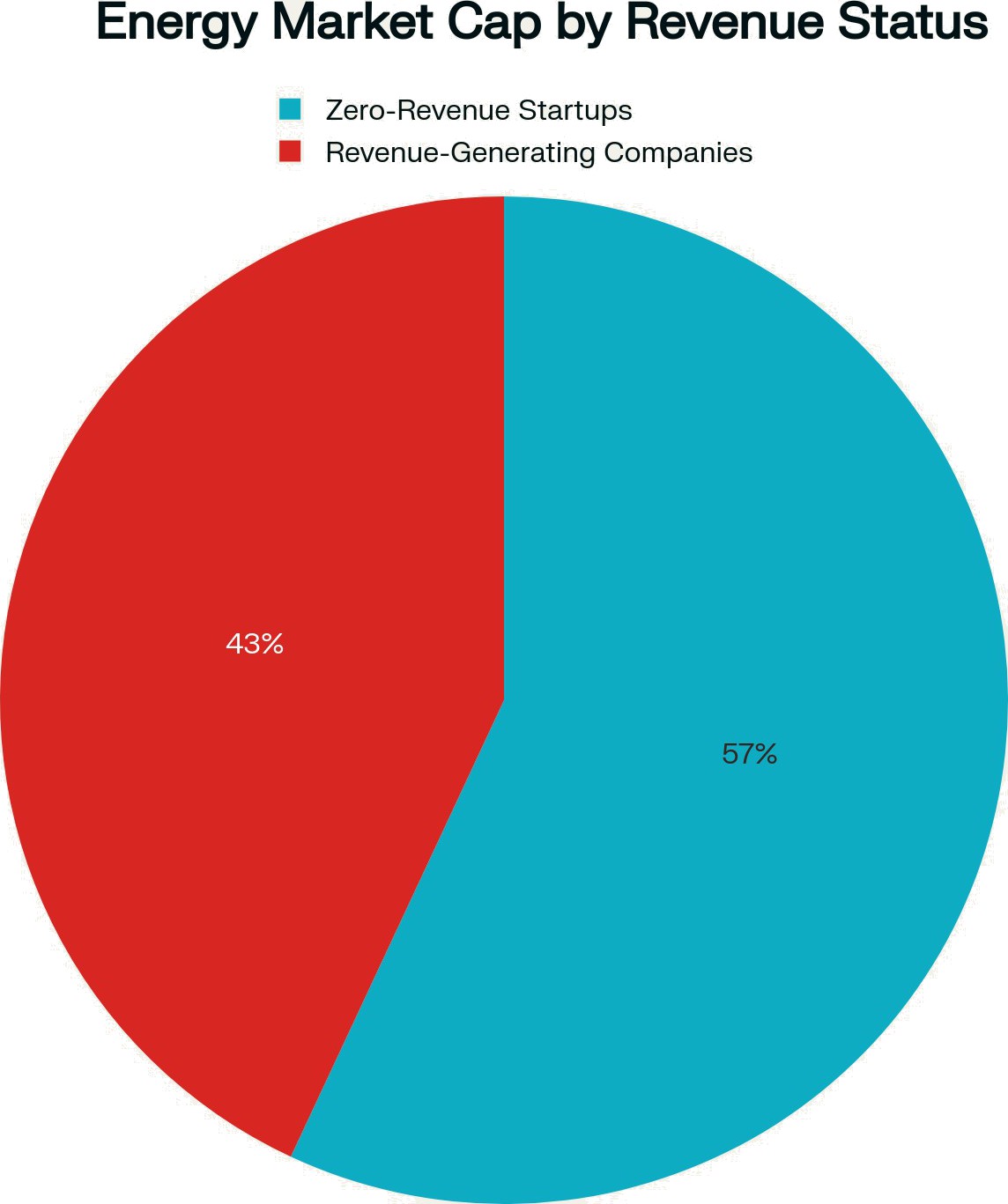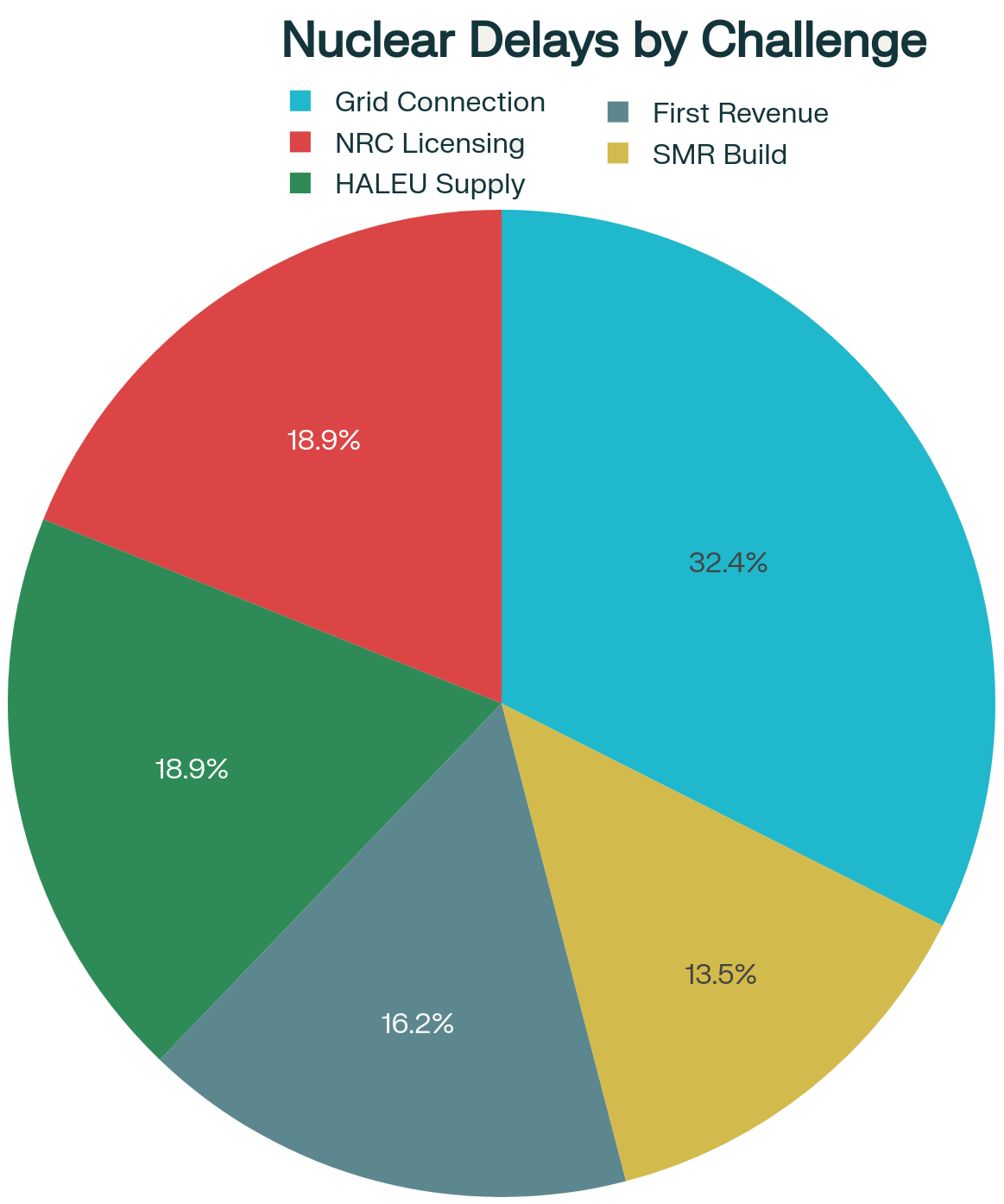BETA Technologies launches IPO of 25 million shares priced $27-$33
These Startups Promise to Power AI’s Future. There’s Just One Problem: No Fuel Supply
A nuclear energy company worth $26 billion has never generated a dollar of revenue, doesn’t own a single operating reactor, and lacks the regulatory licenses needed to build one. Yet Oklo Inc. has surged 750% this year, leading to a speculative frenzy that’s pushed over $45 billion into zero-revenue energy startups promising to power artificial intelligence’s explosive growth.
The similarities to previous market bubbles are hard to ignore.
The AI Power Play Driving Billions into Unproven Technology
Wall Street’s latest obsession centers on a real problem: AI data centers require massive amounts of electricity. Goldman Sachs projects global data center power consumption will surge 175% by 2030, while the U.S. Department of Energy estimates American data centers could consume up to 12% of total electricity by 2028, up from just 2% today.
Tech giants are backing this demand with substantial capital commitments. Microsoft announced $80 billion in infrastructure spending, Amazon secured a 1.9-gigawatt power deal with Talen Energy, and Meta locked in 1.1 gigawatts through a Constellation Energy contract.
But there’s an important difference: These technology companies are contracting with established utilities delivering power immediately or within realistic timelines, not speculative startups years away from first operation.
Zero Revenue, Billion-Dollar Valuations, and a Familiar Pattern
The warning signs extend beyond Oklo. Fermi Energy went public in October at a $16-19 billion valuation despite zero revenue, no binding customer contracts, and possessing only 5% of the equipment needed to meet its capacity targets. The company’s valuation approaches that of Talen Energy, which operates an actual 11-gigawatt power fleet today.
Leading Fermi’s public debut is Toby Neugebauer, whose previous venture (the "anti-woke" bank GloriFi) collapsed after burning through $50 million in just months. That track record hasn’t deterred investors from pouring billions into his latest promise.
Nano Nuclear Energy commands a $2.7 billion market capitalization with no revenue and no commercial operation timeline. Terra Innovatum debuted last week above $1 billion despite being years from deployment. Even Bloom Energy, which has never turned a profit in 24 years of operation, now trades at 133 times forward earnings after surging over 400%.
Historical data shows the danger. Only two other zero-revenue companies achieved larger IPO valuations than Fermi: Rivian and Corvis. Both subsequently collapsed more than 90% from peak valuations. Research shows that zero-revenue IPOs face 3.8% higher delisting rates within three years compared to revenue-generating peers.
The 2020-2021 wave of electric vehicle startups, like Nikola, Fisker, Lordstown, garnered multi-billion-dollar valuations before most imploded. The pattern repeats.

Zero-Revenue vs. Revenue-Generating Energy Companies: Speculative startups with zero revenue command 57% more market value ($46.7B) than established energy companies actually generating power ($35.3B), a valuation disconnect echoing the dot-com bubble’s excesses. Companies like Oklo ($26B) and Fermi ($17B) have never delivered a single watt of electricity, yet collectively dwarf the valuations of profitable players like Plug Power and Centrus Energy that serve real customers today
Wall Street Analysts Flash Red Warnings
Bank of America downgraded both Oklo and NuScale in September, warning that current valuations embed "deployment ramps and discount rates we view as unrealistic." The bank’s analysts calculate that current prices require these startups to capture 75% of the entire global uncommitted small modular reactor pipeline, a scenario they characterize as bordering on fantasy.
Analyst Dimple Gosai was direct: "Current valuations provide minimal margin for error, and the short-term risk/reward dynamics appear unfavorable."
Insider behavior reinforces these concerns. Oklo’s chief financial officer filed to sell $9 million in stock, while NuScale’s largest shareholder Fluor has been trimming positions.
The Reality Check: Fuel, Licenses, and Grid Connections
Beyond valuation concerns, these startups face serious operational hurdles that market prices appear to ignore entirely.
Advanced nuclear reactors require High-Assay Low-Enriched Uranium (HALEU) fuel, currently produced at commercial scale primarily in Russia. Only Centrus Energy operates a licensed U.S. HALEU facility, with current capacity measured in hundreds of kilograms annually. Gigawatt-scale deployment would require tons. Scaling production would take 42 months under optimal conditions, thus creating a supply bottleneck that could strangle deployment regardless of demand.
Regulatory approval presents another major obstacle. The Nuclear Regulatory Commission’s licensing process typically requires 2-5 years minimum, and the NRC has never approved a commercial small modular reactor for U.S. operation. Oklo discovered this challenge in 2020 when its initial license application was rejected for insufficient information: a setback the company is still working to overcome five years later.
Even companies that successfully pass licensing and secure fuel supplies face 5-7 year waits to connect to the electrical grid, with over 100 gigawatts of capacity requests already queued. This infrastructure bottleneck affects all power projects and represents a massive constraint on deployment timelines that speculative valuations completely disregard.

The path from blueprint to revenue spans a decade of compounding obstacles: 6-year grid connection waits create the longest bottleneck, while NRC licensing (3.5 years) and securing HALEU fuel supplies (3.5 years) add critical delays before construction even begins. Even after 2.5 years of building, startups face another 3 years to first revenue, assuming nothing goes wrong. These timelines, largely ignored by today’s soaring stock prices, explain why established utilities with operating reactors may prove the smarter investment.
Bubble Psychology and Retail Investor Risk
Risk economist Didier Sornette, who accurately predicted the 2007-08 financial crisis, identifies several hallmarks of speculative bubbles clearly visible in today’s nuclear energy stocks: surging IPO activity, extreme volatility detached from fundamentals, novel valuation metrics replacing traditional measures, and herd behavior driving prices.
"About two-thirds of the time, a crash results," Sornette’s research concludes.
Retail investors face particular vulnerability. Many of these companies went public via SPAC mergers (a mechanism research shows puts retail participants at a disadvantage). Studies show institutional investors held 85-87% of SPAC shares pre-merger, with retail investors typically entering later at inflated prices. Academic research indicates that VC-backed ventures merging with SPACs "tend to exhibit characteristics that indicate lower quality" and "demonstrate significant underperformance," suggesting venture capitalists offload their weakest portfolio companies onto less sophisticated investors.
The Smarter Alternative: Established Nuclear Operators
Investors seeking exposure to AI’s energy demands without extreme speculation might consider established utilities actually generating nuclear power today.
Constellation Energy operates the largest U.S. nuclear fleet with 21 reactors and has secured major contracts with Microsoft and Meta totaling over 2 gigawatts of capacity. The company trades at far more reasonable valuations than zero-revenue competitors while delivering actual power generation.
Similarly, Vistra Energy and GE Vernova provide proven power generation and equipment, offering exposure to the AI energy boom without the speculative excess characterizing startup valuations.
Microsoft’s Three Mile Island restart involves recommissioning existing infrastructure, not building unproven technology. Amazon’s Talen partnership taps operating nuclear capacity available immediately. The speculative startups, by contrast, are selling promises of future capacity using technologies not yet approved, fueled by supplies not yet secured, connected to grids not yet expanded.
What Investors Need to Know
Nuclear power will play an important role in the clean energy transition, and some of today’s startups may eventually succeed. But statistical reality, regulatory timelines, supply chain constraints, and valuation metrics all point toward a painful shakeout ahead.
As the Wall Street Journal concluded: "If the AI bubble ever deflates, these energy companies with no revenue have the farthest to fall and little in the way of a cushion."
For investors in this frothy market, the difference is clear: companies with operating assets, contracted revenue, and proven execution versus those selling paper promises about reactors they’ll build someday with fuel they don’t have and licenses they haven’t received.
The energy powering AI’s future is real. Whether today’s hottest stocks will be the ones providing it (or tomorrow’s cautionary tales) remains very much in question. History suggests the answer won’t favor those chasing billion-dollar valuations built on zero revenue.
